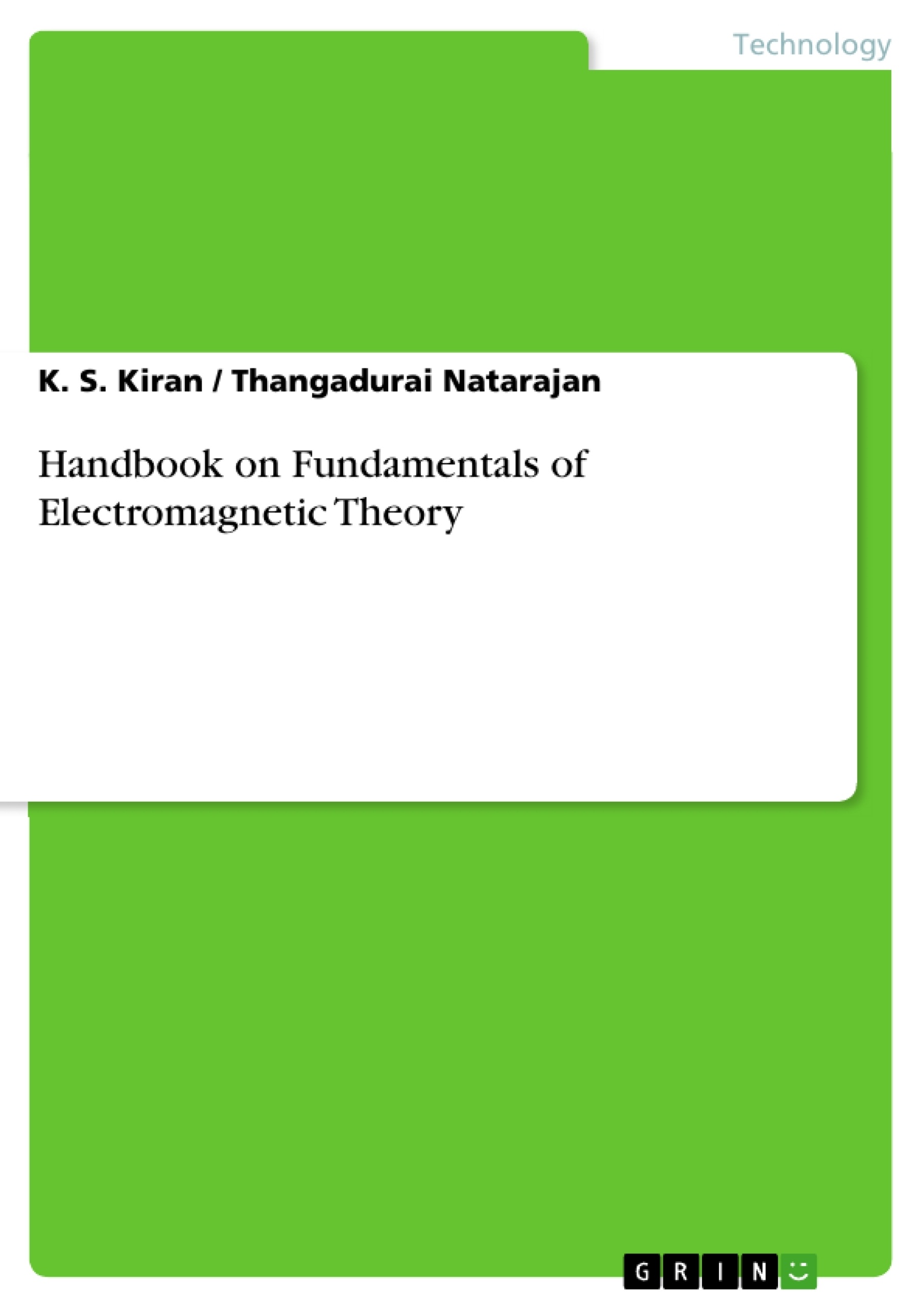Electromagnetic Theory plays an important role in modernizing human life and encompasses wide areas such as: generation, transmission, and distribution of electrical power, digital systems, satellite communications, signal processing, robotics, mechatronics, computer, control, artificial intelligence, and networks.
A four year engineering curriculum normally contains various modules of electromagnetic field theory. However, some curricula do not have enough slots to accommodate the two modules. This book, is designed for undergraduate students to provide fundamental knowledge of electromagnetic fields and waves in a structured manner. A comprehensive fundamental knowledge of electric and magnetic fields is required to understand the working principles of generators, motors, and transformers. This knowledge is also necessary to analyze transmission lines, substations, insulator flash over mechanism, transient phenomena, etc.
This book is written in a simple way so that the students will find it easy to understand the electromagnetic field theory and its applications. Several worked out examples are included to enhance the understanding of electromagnetic field theories. Each chapter also includes several practice problems with answers given at the end of the book, which would facilitate students’ understanding.
Inhaltsverzeichnis (Table of Contents)
- Introduction
- Electrostatics
- Coulomb's law
- Gauss's Law
- Laplace's Equation
- Uniqueness Theorem
- Capacitance
- Energy Density
- Magnetostatics
- Biot Savartz Law
- Ampere's Law
- Faraday's Law
- Self inductance
- Maxwell Equations
- Electromagnetic Waves
- Wave equation
- Plane waves
- Propagation of a uniform plane wave
- Polarisation
- Poynting Vector
- Solved Problems
- Appendix
Zielsetzung und Themenschwerpunkte (Objectives and Key Themes)
This book is designed for undergraduate students to provide fundamental knowledge of electromagnetic fields and waves in a structured manner. The authors aim to equip students with a comprehensive understanding of electric and magnetic fields, essential for grasping the working principles of various engineering devices.
- Fundamental laws of electromagnetic field theories
- Applications of electromagnetic field theory in various engineering disciplines
- Interpretation of electromagnetic field theory concepts using mathematical expressions
- Problem solving procedures in electromagnetic field theory
- Engineering mathematics applied to electromagnetic field theory
Zusammenfassung der Kapitel (Chapter Summaries)
The book begins with an introduction to electrostatics, covering concepts like Coulomb's law, Gauss's law, Laplace's equation, the uniqueness theorem, capacitance, and energy density. It then delves into magnetostatics, exploring Biot Savartz law, Ampere's law, Faraday's law, and self-inductance. The book continues by presenting Maxwell's equations and concluding with a comprehensive discussion of electromagnetic waves, including their properties, propagation, and polarization. The book also includes solved problems to enhance students' understanding of the concepts and numerous practice problems with answers provided at the end of the book.
Schlüsselwörter (Keywords)
The key concepts explored in this book include electrostatics, magnetostatics, Maxwell's equations, electromagnetic waves, Coulomb's law, Gauss's law, Biot Savartz law, Ampere's law, Faraday's law, self inductance, wave equation, plane waves, propagation, polarization, and Poynting vector. The book emphasizes the practical application of these concepts in various engineering fields.
- Citar trabajo
- Dr. K. S. Kiran (Autor), Dr. Thangadurai Natarajan (Autor), 2018, Handbook on Fundamentals of Electromagnetic Theory, Múnich, GRIN Verlag, https://www.grin.com/document/426561



